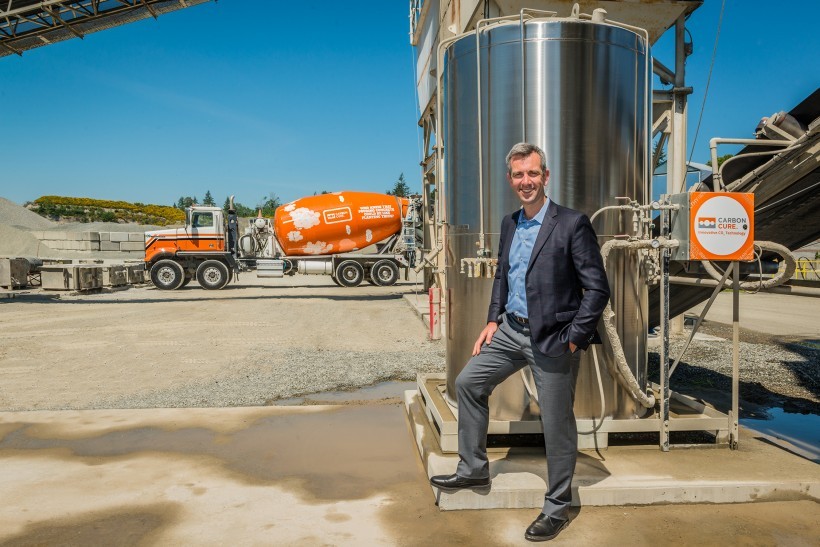Dartmouth’s CarbonCure Technologies has managed to successfully sequester atmospheric carbon dioxide in concrete as part of a joint project with Brisbane, California-based Heirloom, in what both companies have described as a world first.
CarbonCure already sells technology to inject carbon dioxide into concrete, sequestering it and strengthening the end product. What makes the Heirloom project notable is that the carbon being sequestered was captured not from the concrete making process itself, but rather from the atmosphere.
Founded in 2020, Heirloom operates the United States’ only direct air capture facility for carbon sequestration. Its key breakthrough has been using limestone — also an ingredient in concrete — to sequester carbon far faster than older systems can manage.
“This demonstration project is a global milestone for carbon removal technology that confirms concrete’s enormous potential as a climate solution that can permanently store carbon in our most essential infrastructure — from roads and runways to hospitals and housing,” said CarbonCure CEO Robert Niven in a statement.
Carbon capture technology has garnered the attention of policymakers and energy industry players as a way to help mitigate climate change even in the face of significant greenhouse gas emissions, although the technology is largely unproven at scale.
The Canadian government even has an official policy on carbon capture, dubbed its Carbon Management Strategy, in which it promises to pursue the technology as a way to mitigate emissions from the most carbon-intensive corners of the economy.
And CarbonCure has attracted the attention of high-profile investors like Amazon's Climate Pledge Fund, Microsoft, and Breakthrough Energy Ventures, a VC fund backed by such billionaires as Bill Gates, Jeff Bezos and Michael Bloomberg.
When CarbonCure last tapped venture capital markets in 2020, the company refused to disclose how much it had raised. But an analysis by Entrevestor based partly on data from the Canadian Venture Capital and Private Equity Association suggested it was almost certainly one of the largest funding deals in Atlantic Canada that year.
Concrete is the second most abundant man-made material in the world, and cement, its key ingredient, is responsible for an estimated 7 percent of global carbon dioxide emissions.
Niven has previously said his company’s goal is to prevent 500 megatonnes of CO₂ emissions from entering the atmosphere every year by 2030.
“The science is clear: in order to reach climate goals, we must remove billions of tons of already-emitted CO2 from the atmosphere each year,” said Heirloom CEO Shashank Samala, referencing findings from the UN Intergovernmental Panel on Climate Change that even aggressive emissions reductions will still need to be paired with carbon capture.
“This is an important step toward that future and shows the promise of DAC technologies combined with smart, permanent methods of sequestration.”










